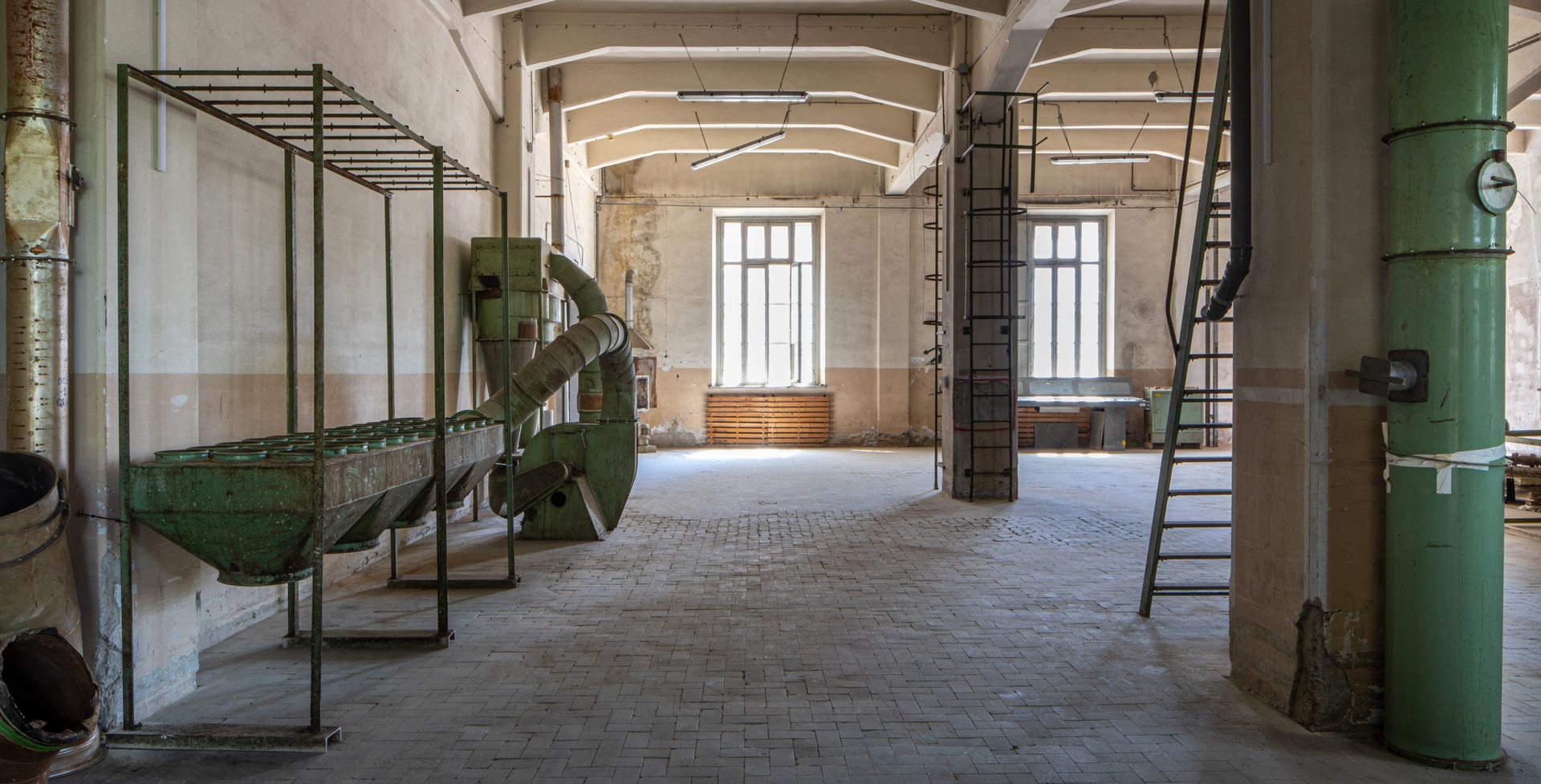Play video
Manifattura for Florence
The history
Testimonies
The staff of the new seat of ex Manifattura Tabacchi Firenze, inaugurated in 1940, were made up of some 1,400 workers, men and women who had swapped their previous places of work for the innovative industrial complex at the Cascine.
As the newspapers of the time recorded: “At Piazza Puccini you can’t pretend to ignore the new animated life that has been taking place there since the Manufacture began to function. The trams arrive loaded with passengers around five in the afternoon, when the workers, having finished for the day, leave the factory and return home”.
Play video
The identity of the place
Tobacco first appeared as a medicinal product from the Americas in pontifical Rome in the second half of the sixteenth century. In Tuscany, the use of tobacco dates back to the second half of the eighteenth century, but it was only in the nineteenth century that the habit of smoking entered into common life, so much so that in 1815 the famous “Tuscan” cigar was created. This mass diffusion quickly led to a different conception of the work carried out by the Monopoly of the Grand Duchy of Tuscany, and to the consequent creation of the Manifatturas.
Why was Manifattura created?
The functions of the two historic Florentine factories of Saint’Orsola and San Pancrazio were transferred to the modern industrial complex of the Manifattura Tabacchi Firenze for two reasons: firstly, to cope with the increased commercial demand for tobacco products; and secondly, to enhance the efficiency required of a modern industrial factory.
The unification of the two factories also resolved the issue of the dispersion of the other services, spread out over five or six distant locations. These services included the Raw Tobacco Warehouses, the Compartmental Office for commercial and tax services, the Department of tobacco cultivation, the Depot, and the Sales Department for Monopoly Goods. In fact, Manifattura Tabacchi Firenze would house all of these different centres of activity, rationalising and reducing a whole series of general expenses related to transport, heat distribution, electricity and surveillance.
A NEW MAJOR INDUSTRIAL SITE CHANGES THE CITY'S SOCIAL AND URBAN LIFE. ARCHITECTURE BEARS THE PRESTIGIOUS MARK OF PIER LUIGI NERVI
At the beginning of the 1930s, work began on an ambitious building plan comprising seven construction phases.
The planimetric organisation of the new factory followed clear distribution principles: with the Management Offices and Puccini Theatre at the front, following via delle Cascine; the warehouses and the maintenance buildings at the back of the lot; and the production areas and general services at the centre of the complex. The various functions were connected by a network of internal pathways and roads, with railway infrastructure, just outside the site, serving the factory.
The architecture bears the mark of Pier Luigi Nervi, a partner of the Nervi & Nebbiosi company which collaborated with the Ministry of Finance and in particular with the State Monopolies body, which entrusted the company with numerous commissions throughout Italy for the construction of new Tobacco Factories.
The New Manifattura Tabacchi project played a role of fundamental importance in the economy, urban planning, and socio-economic life of the city of Florence.
News coverage of the start of construction at the site is highlighted in an article published in September 1934 in La Nazione, in which it comments: “As was stated at the time of the announcement of the programme of works for the new Manifattura Tabacchi, the construction will require a total cost of over 23 million lire. This figure, albeit approximate, can provide us with a notion of the grandeur and importance of the work to be completed“.
4 november 1940: Manifattura Tabacchi is inaugurated
The official inauguration, originally planned for 28 October 1940, the anniversary of the March on Rome, was put back to 4 November.
The inauguration of the Manifattura Tabacchi of Florence would have a particular solemnity, recorded in the coverage of the event by daily newspaper La Nazione:
“His excellency Revel, Minister of Finance, will hold the inauguration on behalf of the entire Board of Directors of the State Monopolies, and the major political, military, civil and ecclesiastical authorities of the province will be present. The programme for the ceremony includes the inaugural rites with a blessing from the Archbishop of Florence, then a visit by the authorities and guests to the various departments of the establishment, where the workers will be in their positions. In the afternoon, the inauguration of the Recreational Facilities will follow, where the Monopoly employees themselves will liven up proceedings with amateur dramatics, poetry and choral performances. The complex of works that makes up the new Manifattura of Florence is to be considered as one of the most important achievements of the extensive renewal directives that the Tobacco Monopoly has been putting in place for some years. We are looking at an organic transformation and enhancement programme inspired by the most modern industrial techniques“.
Play video
The Caveau
The Caveau is a space designed to preserve and catalogue typological elements and objects that constitute the industrial identity of ex Manifattura Tabacchi Firenze.
The Caveau houses a unique heritage representing the history and legacy of Manifattura Tabacchi of Florence. It includes machinery, fixtures, artifacts, and materials found in the factory and carefully recovered. This collection of artifacts will undergo recovery, reuse, and reinterpretation, available to designers, artists, and creators who wish to enhance and breathe new life into them within the regenerated spaces.
